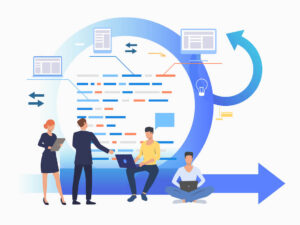Executives are asking how their companies can remain competitive in the era of disruption. Increasingly, the answer lies in a series of interconnected innovations commonly referred to as “emerging technologies,” although they are now increasingly mainstream.
The six technologies that fit the definition of emerging technologies – AI&Robotics, IoT, Blockchain, Chatbot, 5G, and AR – are essential for economies and businesses looking to stay ahead of the competition and evolve. The emerging countries are one of the world’s leading nations in adopting future technologies mainly due to the ambitious national ICT strategies that these countries set very early on. For example, the UAE developed the National AI Programme and appointed the world’s first AI Minister in 2017 to ensure further investment and adoption of artificial intelligence.
The Huawei Global Connectivity Index (GCI) 2020 positioned all emerging countries in the “Adopter” cluster of the index. It recognized them for their commendable work in prioritizing their IT budgets and investments.
Covid-19 has further accelerated digitization in sectors such as education and health in emerging countries, notes Li Xiangyu, Vice President of Huawei Middle East. “During the pandemic, 5G has enabled connectivity for remote offices and education to tens of thousands of families with low fiber coverage in middle east countries. In Kuwait, for example, more than 500 schools are connected to 5G to ensure the best learning experience for students and teachers,” adds Xiangyu.
However, emerging countries still need to progress before realizing the full potential of new technologies and developing robust capabilities across the technology value chain.
These advanced technologies have proven critical in the fight against Covid-19. For example, 3D printing is being used to manufacture medical devices, while scientists use Big Data tools to monitor the virus’s spread. But organizations are caught between budget constraints triggered by Covid-19 on the one hand and the demand for digital transformation on the other. Governments and private sector companies are taking different approaches to mitigate budget constraints while pursuing their digital aspirations. On the one hand, governments are increasingly focusing on public-private partnerships (PPPs) and build-operate-transfer (BOT) type agreements.
While the pandemic has strained the revenue streams of many companies, it has also proven that digital transformation advocates are much better able to respond quickly to change. Companies that are strapped for cash need to take a hard look at all their expenses, including funding for projects already underway, and reprioritize all remaining resources to build a flexible and straightforward business architecture. Companies should focus on digitizing business operations and improving customer experience to achieve their transformation goals.
Transitioning to futuristic architecture is not without its difficulties. For one thing, businesses are burdened with millions-of-dollar legacy IT architectures that they can’t easily dump.
The difficulties associated with legacy IT systems may require businesses with many older systems to implement a two-speed operating model, including a fast-paced, customer-centric front-end running on modern digital platforms alongside a slower, transaction-focused legacy back-end. New clients would be served by the new services, while current users would continue to be done by the legacy platforms, with all divisions having a uniform user interface. Old clients will be converted to the new systems over time, and the legacy architecture can be phased out.
Market processes will become increasingly enhanced, if not fully automated, by the combination of low-cost sensors, higher processing capacity, improved smartphone access, robotics, and new technologies. At any point, existing company procedures may need to be redesigned.
Legacy architectures and core structures should be assessed for digital readiness and possibly transformed to support digital aspirations. Under some conditions, certain businesses will be able to build on top of legacy architectures merely, but, in some cases, the latter may be so restrictive that a complete redesign or even core machine replacement is required. Alternatively, certain companies opt to leave their core business largely intact when pursuing a transformative digital play in an autonomous ‘engine 2’ setup, where IT and processes can be planned and applied in an agile and digitally native manner.
However, Littig believes that businesses must follow “bionic” architectures to reap the full benefits of integrating emerging technology. “A spaghetti of incompatible systems plagues legacy IT architectures, necessitating lengthy update times to install and update these systems. Modern bionic architectures, on the other hand, emphasize a “mental flip” to produce value, beginning with data and enterprise usage cases – not IT applications – and using decoupled, platform-based application stacks and modularity. Bionic architectures, in contrast to traditional architectures that lock data in vertical silos, free data from old, inflexible legacy core structures, and provide a solid digital platform,” Littig continues.
There will be a significant convergence of developments across five engineering disciplines by 2021 and beyond: networking, cloud, AI, computing, and industrial applications. According to Xiangyu, the ongoing introduction of 5G networks will help this conversion. “These five engineering domains would provide governments and businesses in the area with unparalleled opportunities. The partnership between these five realms would improve production and competitiveness, ushering many companies into the Fourth Industrial Revolution and enabling them to flourish on their digital capabilities. Governments will profit as well from being more available, with more organized operations that will improve protection, defense, logistics, and other aspects of city life.”




